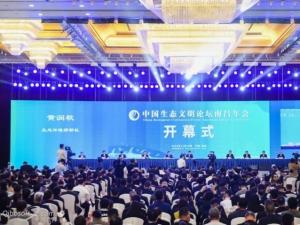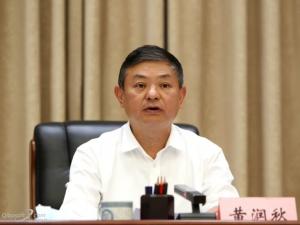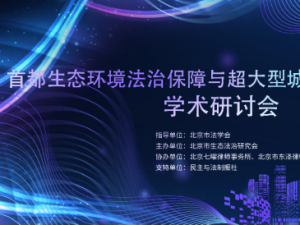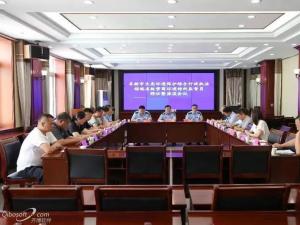喻捷:NGO and climate change
|
Yu Jie 喻捷 The Nature Conservacy 中文摘要 NGO在中国仍是一个快速增长的新型部门,尤其对于环境NGO来说,只有短短三十年不到的历史。至于气候政策、研究、公众舆论和行为的影响,在中国这样的一个转型国家,纯民间组织和官办组织同样扮演着重要的角色,后者甚至更加重要,因为政府所给予他们在决策中的特殊智囊和参谋地位。所以,中国特色的“公民社会”于现阶段正是这种纯民间和官方组织的混合物。基于近年的案例经验和对未来的展望,公众参与的法律框架的改善和建立将对新型NGO拥有更大的社会空间,并延伸其影响力和工作的有效性至关重要。 Chapter abstract NGO sector in China is a newly growing part of the society, especially for environment NGOs. Only less than 30 years could be counted as its history. Regarding non-government organization’s impact on climate change policies, research, public opinions and behaviors, both new non-government and semi-government organizations play crucial role, the latter even more, due to its special advisory status provided by the state. The mixture of old state- controlled social organizations, and new NGOs is the character of China’s “civil society”, for the countries which still undergoing a transition period. Based on the recent experience and future’s perspective, the improvement and establishment of legal framework for public participation will allow new type of NGOs to have bigger social space in their work and extend their influence, effectiveness. The overall background of Chinese environmental NGOs NGO(non- government organization), is a new concept which was introduced by the scholars to mainland China through the theory of State and Society framework in the 1990s. However, within less than 20 years, it has been realized into many new type of civil organizations. They are also the group we will discuss in this chapter. Before this new trend, most of Chinese so-called social groups were attributed to the government, of which both human resource and projects selection need to be supervised by the government. Chinese related law <Social Groups Management Ordinance> was designed to support this type of social groups and restrictions therefore set for other social groups . As a result, in charity area more than 90% of the donation has gone to the government affiliated social groups. To register a non- government organization, one needs to firstly find a government office to accept it as a business supervision line. Only given that, they could then register under the Civil Affairs Bureau under three items, social groups, private non-enterprise unit, foundation and branches of international NGOs. Many NGOs therefore have registered as a corporation which needs to pay additional 5.5% sale tax. By 2004, foundations has a law[1]to guide its registration, while advocacy and charity groups registration also made some progress with certain city’s lower registration thresholds.  According to UNFCCC category, NGOs includes environment NGOs, research NGOs(RINGO) and BINGOs. Within Chinese context, most of RINGOs and BINGOs are government related. However, in climate and energy field, more independent RINGOs has emerged and BINGOs are also become more independent.[2] Overall, international and grassroots NGOs are still the major players in this subject. The first nation wide environmental organization Friends of Nature (FON) was founded in 1994 by a groups of concerned scholars. According to a survey conducted by All China environment protection federation, by 2005, there was 2768 environment groups, half of them came from government background, 40% were student groups, 202 domestic NGOs and 68 Chinese branches of international NGOs. Chinese scholar Wang Ming/ Liu Guohan/ He Jianyu has summarized a few dimensions of categorizing Chinese NGOs.[3]One dimension is that whether the organization has memberships, including individual and groups. Another dimension is if the purpose of the NGO is public interest or mutual interest. If the beneficiary is the whole society, then the resource must also come from the society, on the contrary, if the beneficiaries are the members, the resource must based on the members. without members with members
Source: Chapter 2< Definition and category of social groups>, <Chinese social group reform, from government choice to social choice>, 2001. In fact, in China the vast majority of the NGOs work for public interest, particularly for environmental NGOs. The reason is that, the membership fee is not enough to support the organization. For example, Friend of Nature has a biggest members network in China, which accounts for more than 10,000 members. However, the annual membership fee ranges from 100yuan to 300yuan, this is still far from enough to run a organization which has 16 programs and more than 30 staff. It has evolved from membership, council system to social resource cooperation mode. Besides, environment is usually a regional, national or even international issues, in most of the cases it runs beyond the community in order to to sustain the organization. Further more, environment issue usually is political issue, therefore tight membership type of organization does not have much support from the authority, either. China Development Brief, which is a media specifically report and research on Chinese civil society, published a report in 2006 about advocacy in China. They found that Chinese way of advocacy differs from the western concept of advocacy, which the later aims at improving more just social resource allocation and profound social and economic reform, It could be confrontational under many circumstances. However, in China, many NGOs have expressed strong willingness to avoid confrontation. Instead, having active cooperation with related government, to serve the public interest. They explained during the interview that confrontational type of advocacy does not apply to China’ current circumstance and long standing political culture. Many grass-root NGOs tends to seek the legitimacy of their work from government policy concept, particularly the macro policy strategy, such as Scientific development and harmonious society. On the program operational level, NGOs tend to be more constructive, giving out solution when point out the problem. Talking about advocacy, NGOs choose raising public awareness as the priority and the strategy of the advocacy than changing the policy. However, maintain the independence is still a precious value. To coordinate independence and the cooperation with the government is a important and necessary skill NGO should have. The important legal progress has also made this NGO’s role in raising public awareness, influence policy making, particularly in the public event clearer. In 2002, National People’s congress passed the law <Environmental Impact Assessment law>. Since then, all the new construction project needs to either need to prepare environmental impact assessment to different degrees. In 2006, The State Environmental Protection Administration (SEPA) released the <EIA public participation guidelines> which requires information publicity and hearing being hold during the draft of EIA report. Public events Before and after this legislation progress, two public participation cases had emerged as well-known examples of public participation on new development at climate and energy field. One is Nujiang River project in Yunnan, southeast China. Another is Liu Li Tun incineration project in Beijing. In 2003, the information of building two big reservoirs with thirteen dams on Nujiang River was leaked out. National Development and Reform Commission approved the project, of which power production would be bigger than Three Gorges project, without convincing EIA report and basic information publicity to stakeholder, particularly the community who would be affected by the project. Environmental NGOs like Green Volunteers, Yunnan Public Watershed, Friends of Nature had successively joined the campaign of protect the river. Seminars and forums being hold by NGOs, together with SEPA’s expert consulation meeting in both Kunming and Beijing. Well-known environmentalist Dr. Lv Zhi said that: “ What we appealed is not opposition the dam construction, but a fair and open policy making process.” The year after, Premier Wen comment on the project: “ The government should research with caution and make policy with scientific evidence towards these big dam project with contradicted opinion on its environmental impact, which has caused highly wide public attention.” [4]By now, the debate of if the original plan should be implemented is still under debate. Some experts claimed that before the approval of EIA of its World Natural Heritage Protection plan, Watershed comprehensive development plan and Watershed hydro development plan, the government should not approve single hydro power construction project. The observer commented that the role NGOs played in public event has been a lot more active and has helped to improve environmental governance. [5]The old types of NGO’s work has been bird watching, tree planting and trash picking. In this case, energy development caused environment impact in fact was not the key message sent by environment NGOs, as the environment impact such as bio diversity loss and carbon emission was difficult to qualified and it will result in income loss of local people finally. This has always been a puzzle of Environmental NGO’s engagement in anti-big dam projects. After Nujiang event, the big hydro power project development nation wide has been slowed down due to the consideration of migration issue. However, the plan made for 12th 5-year from 2011-2015 has prioritized hydro power as the main technology to achieve nation’s pollutants reduction and energy conservation target, due to its relatively low cost. The newly released plan will aim the national hydro power capacity from 210GW in 2010 to 324GW by 2015. The hydro resource-rich area will be at Yunnan, Tibet and Sichuan’s rural area, where also are biodiversity and culture rich area. [6] The overall energy resource for 12th 5-year plan is optimizing the coal power development, which aims at high efficiency coal combustion technology application, and full- speed developing nuclear. The government support for wind solar power has been spoken down in the new plan due to its higher cost. Another energy related environmental public event is public acceptance of incineration. The first resistance event occurred in Liulitun Beijing. Comparing to Nujiang case, the strongest force in this movement is community people themselves. Liulitun residents organized together, trying to turn down a incineration project which is planned to be built 200 meters away from their compound. Before it was a landfill and the people who lived here has suffered from bad smell for 10 years. The incineration project was one of Beijing government’s four incineration projects planned for its 11th 5 year plan. At the end, only one of them was built without too much public resistance. As land is becoming more and more a scarce resource in Chinese cities, particularly Beijing, landfill space is far from sufficient to meet the growing demand. Therefore, the government has set the target of 20% incineration from Beijing’s total amount of waste production. However, without information transparency and public consultation, the public tended to not to trust the accountability of the technology. Connected by BBS, the residents got together and play different to prepare solid argument and petition. Finally, it gained support from SEPA and the project was cancelled. Liu Litun case was seen as a successful case of grass-root level of public participation. NGOs has provided support along the petition and summarized lesson learnt to disseminate it to other public participation cases. Following Liutitun, a few other incineration projects in Beijing and in Southern China has received strong public resistance. The local governments think there is no better way to sustain the waste treatment in the urban area than incineration. Improving the transparency may gain understanding and gain trust from the public. Beijing has opened one of the incineration once a week and information has to be put online for appointed period. [7] In order to solve the landfill space shortage and pollutants leakage problem, and generate power from waste resource, State Council has set up a national target for waste harmless treatment rate up to 80%, including recycling, bio-treatment and incineration. [8]The key issue will be location, if has to choose remote area, then the higher cost caused by transportation will be shared by the polluters. In fact, with the economy grows, the citizen’s right awareness is higher alongside. As many power generation projects involve acquisition of land, information publicity fair negotiation is needed. When property is more expensive to acquire, the cost of energy will have to grow gradually or move to moe rural area. This will affect Chinese energy structure in the long run, for all energy resources, including coal power plants and even more for nuclear power plants. The planning economy may encounter the obstacle of negotiation with the citizens and the higher cost occurring accordingly. During these public events, NGOs has played the role of investigation, reflecting the views of the stakeholders who were not exposed to the information earlier, submitting petition, communicating the view point, summarizing lesson learnt from the cases, as well as dissemination. These engagement aim to better governance during policy making process. Before, many conflicts between project developer and affected people will only remain for very long time after the controversial project construction. With more public participation before the construction may result in changing the original plan or canceling it, but will avoid long term conflict as usual. Business NGOs Business NGOs are composed with both semi- civil organizations and pure civil organizations. For example, China electricity council (CEC) was founded with approval of State Council in 1988, with members from all Chinese electricity enterprises and institutions. It is now operates under the China power sector’s regulatory body, State electricity regulatory commission, which is quite different from western countries. Usually, the industry association holds different interest with the regulator. However, in China, many of the electricity enterprises are state-owned or State- owned holdings. The mission of CEC is to bridge the government and enterprises, assisting execute government policy, as well as serve the member enterprises, providing legal rights and pursue member’s interest. CEC undertakes the work big consultation task as <Power Sector 12th 5 year planning report > (draft for review). The report was composed by council members, totally 14 big electricity enterprises, state-owned consultation firms and research institute under the biggest grid company. Big state-owned company’s interest could be well reflected in the new plan. On CEC’s official website, they said this report is due to provide valuable reference for the policy makers. In fact, as this report has synthesized the view of top experts from power sector, it has been taken by the government for the electricity part of 12th 5-year plan. The government basically endorse these semi- NGOs to take on the research work for the government because it shares certain characters as the government. For instance, the head of CEC is supposed to be appointed by the organization department of Communist Party. Similar character is also hold by China Steel Industry association. In other areas, where more private enterprises within, tend to have both government oriented NGOs and real membership based business NGOs. For example, in chemical industry, the official NGOs is China Petroleum and chemical industry federation, which has the same level of privilege as CEC such as drafting industrial plan. On the contrary, Chinese chemical industry association is a member enterprises oriented industry association. They collect industrial data, make industrial analysis and provide legal support to member enterprises, as well as make recommendations on industrial quality standrad, pre-caution system, which on the different level of government policy. The influence of these two industry associations are there obvious. In addition to traditional energy sector industry associations, NGOs are even more active at clean energy sector, and more international cooperation has emerged. One example is Chinese renewable energy industries association (CREIA). It was founded under a project “Accelerating Chinese renewable energy commercialization capacity building” , initiated jointly by former State Economy and trade commission, UNDP and GEF. In 2002, it received the approval from Ministry of National Civil Affairs. It describes itself as the bridge of government, research institutes and enterprises. In fact, its manager are originally all from Energy Research Institute (ERI) of NDRC(National Development and Reform Commission) which was the grantee of the joint project. CREIA receive enterprises member from all renewable energy sector. As renewable industry is newly established industry and need strong government support, CREIA has played the role of perusing good policy framework of the industry boom. Its head Li Junfeng is vice general director of ERI, who is the leading expert of renewable energy policy in China. In 2004, he led drafting the first renewable energy promotion o China. Before the law was finally passed by National People’s Congress, international consultation was hold which invited international experts from both environmental NGOs and Business NGOs, particularly experts from European wind energy association introducing the counterpart law in Europe. After a while, it could financially support itself from membership fee, conducting research for partners and making profit from organizing industrial conference, it became independent from its original development project. One thing worth mentioning is that specified from other business NGOs, CREIA has a very close cooperation with environmental NGOs. It has worked with WWF on a renewable energy enterprises club, to make policy recommendations on behalf of the companies. It also released a s series of report of world wind energy outlook and Chinese wind energy vision. CREIA is one of the most active industrial associations in China. It is more similar to the concept of industrial association in the west except it could draft the law proposal for NPC. For international corporates, Chamber of Commerce represent speak their interest. For example, European Chamber of Commerce China (ECCC) has members which operates their business in China. Since many European companies has clean energy and its related business, so promote clean energy application and develop its market in China is also one of their missions. Regarding company’s interest, two related working groups was set up. One of energy working group, another is CDM working group. The member representatives collectively prepare policy paper to Chinese government and also when foreign ministers and premiers comes, they could aslo make policy recommendations through the bilateral channels. Overall, Chiese business NGOs is growing rapidly, on both numbers, working approaches. It is clearly that there are two types of those NGOs, one origins from former government industrial related departments, and some was established to take over some of government’s industry research, regulatory, restructuring and stimulation plan. Another is mainly based on the member’s needs, serving the members is its priority. Besides, the research institutes which usually are categorized into RINGO(Research NGOS) of UFCCC advisory bodies. Differing from the research institues, which have a independent status, majority of Chinese research institues are under government and state- owned enterprises. For example, Chinese electricity science institute and belongs State Grid Company, two national-level Energy Research institute respectively belong to NDRC and State Grid Company. Particularly the institutes under State Grid Company, of which research usually is to support the company’s business development. However, along with NGO development, research type of NGOs has also emerged. We will mention them in later sections. Environmental NGOs Large Number of environmental NGOs in developed countries emerged during the mass movement around late 60s and early 70s. The agenda at that time is water pollution from industries, anti- nuclear power plants and so on. Climate Change was not an issue back then. It became a working subject since 80s, and this was after the air and water pollution were solve to large extent in those communities. For Chinese NGOs, climate change only came into their views in recent years. In many developing countries, climate change is integrated to the more concerned local subject like air quality and energy conservation. Therefore, the aspect of the programs designed is usually from local interest. After 17 years development, one of the earliest established Chinese environmental NGO, Friend of Nature’s overall programs has fall into four types, change public behavior, environment policy advocacy, support grass-root environment protection actions, and green communication. “26 degree AC energy conservation” was initiated by FON and other 5 NGOs. After a series of promotions activities and the following year’s continuous effort, general office of State Council adopted the proposal in 2007, requiring all public buildings turn the AC up to 26 degree. Other programs are Green Transportation, Green Consumer Guidebook, Summer Day Switching Lights. The Green Transportation investigate the bicycle parking and renting situation along Beijing subway stations, as well as study Beijing’s road status, inspire the volunteers to draft an enjoyable cycling route. The new project of FON is called Low Carbon Family. The first activity, it will take on is teaching more than 200 volunteer family to measure the water, energy consumption and provide simple solutions to reduce those consumptions. In 2011, for the public acceptance of electricity price ladder, FON add a big survey of public opinion towards this policy and publish the final result on 5th June, Earth Day. Last year, when the policy proposal of electricity price ladder came out, there were lots of opposition towards the proposal. The main point is that it is way to increase price for the monopolized utility, rather than achieving the goal of energy conservation and protect the environment. FON’s new activity is very responsive and based on the idea of public participation. Collecting the public opinion accurately and building the trust between the policy maker and the public is the goal.[9] Various Chinese NGOs are seeking diverse approaches on both climate mitigation and adaptation. For example, Global Environment Institute(GEI) aims to solve environmental problems by providing market-cased models. It undertakes the original research on the concerned issues and designs projects accordingly, trying to find solutions for the problem. The head of GEI used to work as a research of Environment Science Institute under SEPA. GEI’s climate and energy program focus on market based approaches to solve financing for energy efficiency and renewable energy development opportunities. It has worked on CDM pilots and demonstrations on heat recovery in chemical plants and bio energy projects., as well as cooperative procurement and market transformation for urban energy efficiency in China. GEI also work with American NGO Center of Climate Strategies (CCS)on developing regional GHGs emission reduction for Guangdong province by introducing CCS’s knowledge in this field from making action plan for many States in the States.[10] Another NGO which is very much climate and energy oriented is The Innovation Center for Energy and Transportation(iCET). The head of is an low carbon transportation expert Dr. An Feng. iCET has participated China’s passenger vehicle fuel economy standards, also iCET’s Low Carbon Transportation program has expanded to monitoring and reporting on the implementation of fuel economy standards, development of fuel economy standards for commercial vehicles, updating and promotion of environmentally friendly vehicles, and groundbreaking research and policy development in low carbon transportation fuel standards and policies. iCEThas also taken a dive into policies related to electric vehicles in China.[11] The above mentioned NGOs are all based in Beijing, which has wide exposure to international cooperation opportunities and policy making process. On the contrary, the NGOs in other Chinese cities are rather take more local issues, like water, agriculture and biodiversity as the agenda items. Comparing to Chinese Environmental NGOs, international NGOs has long history experience working on climate and energy issue, from its UN political process to national legislation on renewable energy and energy efficiency, and public education on this issue. Many international NGOs started their China climate and energy program by introducing global program to China. World Wildlife Fund and Greenpeace are the early comers and hold high public profile in this field. Their Chinese climate program both started working on UNFCCC negotiation process since 2003 and 2004. At the same time, Greenpeace started the renewable energy program with publishing global wind energy outlook with CREIA and EWEA in 2004. WWF tried to introduce Green Electricity system to the utility. National Resource and Defense Commission and Environment(NRDC) Defense Fund(EDF) have both brought their specific knowledge to China. NRDC has worked on building energy efficiency, demand side management and renewable energy. Environment Defense Fund also firstly introduce the organization’s core concept emission trading system to China on SO2 pollution. In the following years, the international NGO’s programs has extended to policy advocacy, corporate partnership, pilots project study, public education, stakeholders capacity building and climate impact. Besides the operational NGOs, foundations also played a big role in climate and energy agenda setting, particularly Energy Foundation. It has five pillar programs, power and renewable energy, building energy efficiency, transportation, low carbon pathway and environment governance. As China cities at the core of many global environmental challenges, some non-international NGOs has also expand their operation to countries China. World Resource Institute set up its China branch in 2009. Climate change is its priority program, which brings GHGs protocol tool it has developed with its partner in the past 20 year to China, helping Chinese industry and cities to get more accurate GHGs data. Also, it tries to develop programs to create new financing scheme for Chinese energy efficiency opportunities and mitigation opportunities on the city level. In recent years, building up partnership with enterprises and local government, are two new trends for NGO work. The aim of working with the enterprises is to build its capacity to better tackle the upcoming challenge and make the lead in the market by doing so. “Low carbon cities” concept was firstly promoted by NGOs, afterwards it was adopted by many cities, without sufficient scientific analysis and solid plan, but statements. In 2010, NDRC announced 5 provinces and 8 cities will be low carbon cities pilots. However, the GHGs statistics and low carbon criteria are still under preparation. No developing country has developed such a system yet, particularly cities are still experiencing rapid urbanization. NGOs like WRI, Institute of Sustainable Development, NRDC, WWF now have projects to help the cities making plans. Besides mitigation, NGOs are also devoting resource to adaptation programs, mainly the development focused NGOs, like Oxfam. However, it is still not easy to distinguish traditional disaster relief and poverty alleviation work, as the future weather pattern of climate change is not easy to predict and build up facility to adapt to it, particularly when there is yet a national adaptation plan. Hot topics Apart from working in China, NGO’s another mission is to communicate China to other audiences and create the mutual understanding. Early in 2008, Heinrich Boell Foundation published a book < Climate and energy policy in China>, summarizing the existing related policies by that time. Climate Group also have published a series of reports called <Clean Revolution>, introducing China’s clean energy related policies, achievements ans main barriers. WRI also released a series of publications, reporting energy statistics data in China[12]. Beyond this, WWF US and WWF China jointly suggested that China and US could exchange their experience on carbon emission statistics to build up mutual trust, a report was printed accordingly. Worth noticing, after Copenhagen UN Climate negotiation, the international process has slowed down which changed NGO’s agenda in a great deal. National target implementation and solution oriented work has replaced global deal to the priority. Technology, related policy, market and finance came into NGO’s perspective. Besides wind and solar PV energy, centralized solar power, electric car, CCS and LED has become popular subject in climate and energy field. Research has widely covered its marketization model to help improvement effective use of public finance. On Macro issues, significant amount of research were being done in recent years, particularly the ones about Chinese long term mitigation pathway. In 2010, a project < China 2050 low carbon development pathway>which has taken a few years and involved more than 120 leading experts in China published its results. For the first time, it drew up China’s long term emission reduction scenarios. This research was included a bigger project <2050 China energy and carbon emission report>,which give out scenarios of the constraint factors of development from China’s resource, population, environment and climate change, the driving forces such as per capita income, globalization, urbanization, industrialization, marketization, and the potential changes of policy, consumption pattern, finance and fiscal institution and international cooperation which could affect energy supply and demand. It recommended three steps to reduce China’s carbon emission applying to different periods. From now to 2020, carbon emission rapid growth period, 2020 to 2035, energy diversified development period, and 2036 to 2050, the critical carbon emission reduction period. Even this has not adopted by the government, in the past, the research projects energy foundation funded has apparently made impact on government policy making. For example, its <The voluntary partnership of energy conservation between government and enterprises> has brought about the domestic program of “One thousand enterprises energy conservation program”. Its carbon tax or energy tax proposal aslo likely to be one of key measures to improve implementation of national energy efficiency target. Civil society is still a fresh element in today’s China. Besides contributing expertise and resource to the debate, connecting public through new media is also a emerging approach has becoming more important working method. Before Copenhagen climate conference, Greenpeace opened a online platform for public to engage the process and express their view to the global deal. This “I Care” website has registered more than 86,000 people. Climate Group’s “Million Forest” took a rather practical approach to connect the committed public and enterprises. Once people promised to change their behavior, the company will make a donation to plant trees in Chinese western region to help the people’s livelihood, for the purpose of adaptation. Environment Defense took a rather similar approach, at 2010 Shanghai EXPO, people could purchase Voluntary Emission Reduction units to offset the emission occurred from commute to EXPO site through EDF’s service. Looking back, 5 years ago, NGO’s program on climate change is rather small and quite limited. With China’s rapid economic growth and the GHGs emission growth following, China has become a country which could be avoided. Energy efficiency, or say carbon efficiency has become a national strategy. Government, business, NGO and public are respectively seeking opportunities, playing roles and achieving the mission in its field. NGO has been playing a crucial role who connects the dots, facilitating, helping and monitoring the low carbon development.
[1]<Foundation Management Ordinance>, issued by State Council, came into effect on 1st June, 2004.
[2]Non-governmental organization’s advocacy in China, Robyn Wexler, Xu Ying, Nick Young, 2006, China Development Brief publication, in Chinese.
[3]<Chinese social groups reform, from government choice to social choice>, Wang Ming, Liu Guohan, He Jianyu, 2001, Social Sciences Academic Press
[4]The reference material is from Liu Jianqiang’s report on Nujiang Project on Sountern Weekend, September 2004.
[5]Lu Yiyi, Environment civil society and governance in China, Chatham House Briefing, August 2005.
[6]Cai Xin Media, 12th 5 year plan’s energy structure planning.
[8]《垃圾焚烧发电步入高潮期企业并非喜笑颜开》,《南方都市报》,2011-03-28。
[9]Materials are from both Friends of Nature website and <Green China, Race to the future Climate Change Impacts on China> report, OCT 2010.
[10]Materials are from Global Environmental Institute’s website.
[11]From iCET’s website.
[12] Mitigation Actions in China: Measurement, reporting and verification, World Resource Institute,2009.
|
我来说两句
已有0评论 点击全部查看






